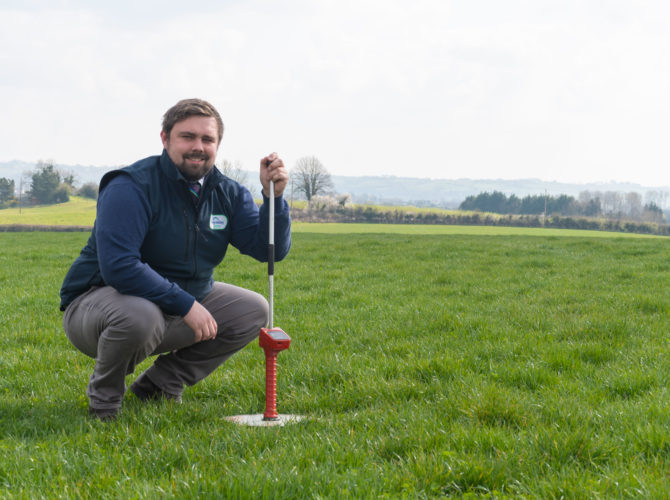Get The Most From Grass This Spring.
30th March 2022

As the cost of milk and meat production has increased dramatically in recent times, it has become ever more important to get the most from our home grown forages this spring. Given the weather conditions we encountered in early March, it has been difficult to get cattle turned out to grass. Conditions have improved in the last few weeks, however where possible it is advantageous to get stock turned out to pasture.
Spring grass is highly nutritious and will improve the milking ability of cows and the daily liveweight gain of growing cattle compared to silage. Turning cattle out early will also save silage reserves for next winter as the cost of replacing that silage this year will be much more expensive. Grazing grass early will stimulate and encourage grass growth after the winter, allowing more grass to be grown than if pastures are left un-grazed until later in the year.
If possible, lighter ground should be grazed first. This will allow more time for heavier land to drain and results in better paddock cleanout when grazing these fields. At this time of the year, it is important not to poach or damage ground, which can reduce productivity for the rest of the summer. With slow grass growth at this time of year it may be worthwhile to further subdivide fields to allow grass to recover more quickly and to prevent poaching. It is important to graze down to 1500kg/DM (4cm) as this first grazing which will help maximise grass quality for the rest of the season.
The entire herd does not need to be turned out on day one and starting to graze smaller numbers of cattle helps build a grass wedge and prevents covers from getting too heavy. Aim to have the first rotation completed by late April before grass covers get too heavy and become more difficult to manage. Walk the farm weekly to determine grass availability and growth. This can be done using a raising plate meter or by eye to establish supply versus demand and can determine any need for supplementary feeding or the possibility of increasing grazing numbers.
When choosing cows to graze, it is advisable to first turn out late lactation cows (100 + days in milk), that have been scanned in calf. Cows producing greater than thirty-five litres per day should remain housed on a stable consistent diet as these animals will be under the most stress.
A planned turnout is crucial to help transition cows onto grass to allow the rumen to adjust. Start off on light grass covers and for the first few weeks, transition cows gradually to full time grazing.
• Week 1 – 3 to 4 hours per day
• Week 2 – Out by day, in by night
• Week 3 – Full-time grazing, with buffer feed 2 to 3 hours before the evening milking
Post grazing, fertiliser should be applied to boost growth for the subsequent rotation. This could be applied in the form of slurry using low emission spreading equipment at a rate of 2,000g/acre or applying 20-24 units of nitrogen per acre. Where necessary it should be possible to take excess grass out of the rotation to maintain grass quality.
For more information or technical support to get the most from your grazing platform this spring, please contact your local Fane Valley representative, call 028 9261 0485 for Agronomy & Forage or 028 8224 3221 for Fane Valley Feeds.


